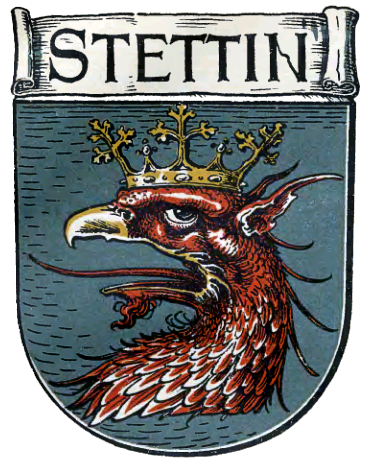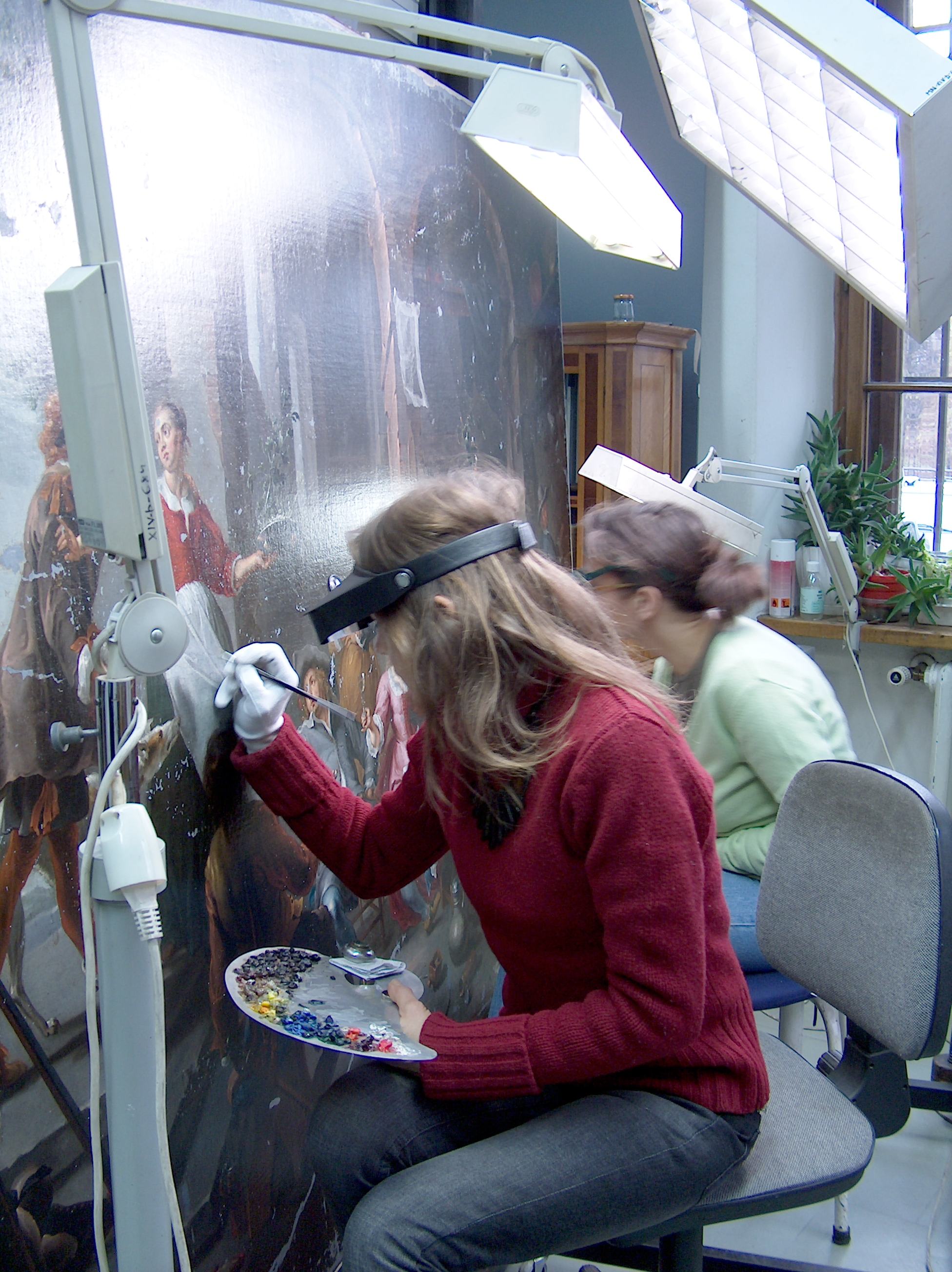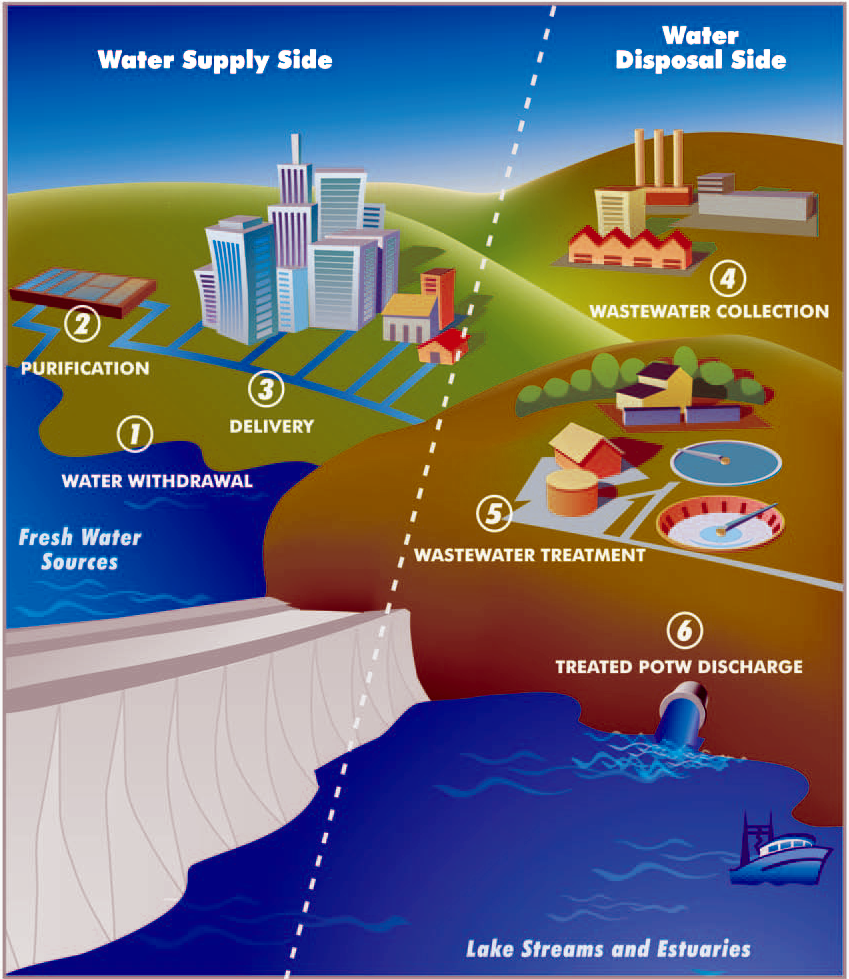|
Szczecin Pumps
Szczecin pumps, colloquially known as Berliners, are historic water pumps in Szczecin, Poland, that are a characteristic object of the city. There were 70 pumps originally made between 1865 and 1895, with 28 surviving to this day, 27 of which hold the status of cultural property. History The pumps were manufactured between 1865 and 1895, in the F. Poepck Water Pump factories located in Szczecin and Chojna. Originally, there were around 70 pumps made, of which 28 survive to this day. Originally, the pumps were painted in blue with colorful details depicting the city coat of arms. After World War 2, they were repainted to a green colour. In the first years after the war, the pumps were very useful for the city inhabitants as the water supply network remained not fully functional at the time. At that time, the elements from damaged pumps were relocated to the working ones. At the beginning of the 21st century, the pumps were repainted to their original colours. In 2000, thanks to ... [...More Info...] [...Related Items...] OR: [Wikipedia] [Google] [Baidu] |
Szczecin Pompa Uliczna
Szczecin (, , german: Stettin ; sv, Stettin ; Latin: ''Sedinum'' or ''Stetinum'') is the capital and largest city of the West Pomeranian Voivodeship in northwestern Poland. Located near the Baltic Sea and the German border, it is a major seaport and Poland's seventh-largest city. As of December 2021, the population was 395,513. Szczecin is located on the river Oder, south of the Szczecin Lagoon and the Bay of Pomerania. The city is situated along the southwestern shore of Dąbie Lake, on both sides of the Oder and on several large islands between the western and eastern branches of the river. Szczecin is adjacent to the town of Police and is the urban centre of the Szczecin agglomeration, an extended metropolitan area that includes communities in the German states of Brandenburg and Mecklenburg-Western Pomerania. Szczecin is the administrative and industrial centre of West Pomeranian Voivodeship and is the site of the University of Szczecin, Pomeranian Medical Univers ... [...More Info...] [...Related Items...] OR: [Wikipedia] [Google] [Baidu] |
West Pomeranian University Of Technology
West Pomeranian University of Technology, Szczecin ( pl, Zachodniopomorski Uniwersytet Technologiczny w Szczecinie, ZUT) is a technical university in Szczecin, Poland. The university was established on January 1. 2009 in Szczecin, from the merger of the Agricultural University in Szczecin and the Szczecin University of Technology. The first rector of the university was Professor Włodzimierz Kiernożycki. The university has 10 faculties with 47 fields of study. The university employs 2.3 thousand employees, and about 15 thousand studends are taught on the university. The main goal of the university's activity is to educate and conduct scientific research in the field of technical, agricultural, economic, biological, chemical and mathematical sciences. History The university was established on 1 January 2009. It had formerly existed as two academies: the Szczecin University of Technology ( pl, Politechnika Szczecińska) and the University of Agriculture in Szczecin ( pl, Aka ... [...More Info...] [...Related Items...] OR: [Wikipedia] [Google] [Baidu] |
Castle Way, Szczecin
Piotr Zaremba Castle Way is an overpass road in Szczecin, Poland, that is a part of the Voivodeship Road 115. It is one of 4 main roads of Szczecin, connecting the city and Police County with the rest of Poland. Description The Castle Way is 2.4 km (1.5 miles) long and 18 m (59 ft) wide. It consists of the series of overpasses, the bridge over Parnica canal, the overpass over Łasztownia island and the bridge over Oder river. The road has existed leaning north and west to the city centre, and through that, to Dobieszczyn, as well as the south exit leading to Police, and the east exit leading to the municipal neighborhoods of Międzyodrze-Wyspa Pucka and Prawobrzeże. History Castle Way was built in place of Log Bridge that got destroyed during the World War II World War II or the Second World War, often abbreviated as WWII or WW2, was a world war that lasted from 1939 to 1945. It involved the vast majority of the world's countries—including ... [...More Info...] [...Related Items...] OR: [Wikipedia] [Google] [Baidu] |
Germany
Germany,, officially the Federal Republic of Germany, is a country in Central Europe. It is the second most populous country in Europe after Russia, and the most populous member state of the European Union. Germany is situated between the Baltic and North seas to the north, and the Alps to the south; it covers an area of , with a population of almost 84 million within its 16 constituent states. Germany borders Denmark to the north, Poland and the Czech Republic to the east, Austria and Switzerland to the south, and France, Luxembourg, Belgium, and the Netherlands to the west. The nation's capital and most populous city is Berlin and its financial centre is Frankfurt; the largest urban area is the Ruhr. Various Germanic tribes have inhabited the northern parts of modern Germany since classical antiquity. A region named Germania was documented before AD 100. In 962, the Kingdom of Germany formed the bulk of the Holy Roman Empire. During the 16th ce ... [...More Info...] [...Related Items...] OR: [Wikipedia] [Google] [Baidu] |
Berlin
Berlin ( , ) is the capital and largest city of Germany by both area and population. Its 3.7 million inhabitants make it the European Union's most populous city, according to population within city limits. One of Germany's sixteen constituent states, Berlin is surrounded by the State of Brandenburg and contiguous with Potsdam, Brandenburg's capital. Berlin's urban area, which has a population of around 4.5 million, is the second most populous urban area in Germany after the Ruhr. The Berlin-Brandenburg capital region has around 6.2 million inhabitants and is Germany's third-largest metropolitan region after the Rhine-Ruhr and Rhine-Main regions. Berlin straddles the banks of the Spree, which flows into the Havel (a tributary of the Elbe) in the western borough of Spandau. Among the city's main topographical features are the many lakes in the western and southeastern boroughs formed by the Spree, Havel and Dahme, the largest of which is Lake Müggelsee. Due to its l ... [...More Info...] [...Related Items...] OR: [Wikipedia] [Google] [Baidu] |
Coat Of Arms Of Szczecin
The coat of arms that serves as the symbol of the city of Szczecin in West Pomeranian Voivodeship, Poland depicts the head of a red griffin with a yellow (golden) beak wearing a yellow (golden) crown, placed on the blue background. Design The coat of arms is a blue Iberian style escutcheon (shield) with square top and rounded base. It has a head of a griffin with red feathers, a symbol of house of Griffin, a dynasty that ruled in Pomerania during the Medieval Ages. The crown and beak of the griffin are golden (yellow). The size proportion of the coat of arms height to width is 1:0.75 (4:3). The border of the escutcheon is a golden (yellow) stripe. History The griffin, a mythical creature present in the coat of arms, had appeared for the first time in city's seals during the 8th century. The current design originated around 1360 while the period of the formation of escutcheon colour remains unknown. After 1660, Charles IX, king of Sweden, had added two lions holding it from b ... [...More Info...] [...Related Items...] OR: [Wikipedia] [Google] [Baidu] |
Groundwater
Groundwater is the water present beneath Earth's surface in rock and soil pore spaces and in the fractures of rock formations. About 30 percent of all readily available freshwater in the world is groundwater. A unit of rock or an unconsolidated deposit is called an aquifer when it can yield a usable quantity of water. The depth at which soil pore spaces or fractures and voids in rock become completely saturated with water is called the water table. Groundwater is recharged from the surface; it may discharge from the surface naturally at springs and seeps, and can form oases or wetlands. Groundwater is also often withdrawn for agricultural, municipal, and industrial use by constructing and operating extraction wells. The study of the distribution and movement of groundwater is hydrogeology, also called groundwater hydrology. Typically, groundwater is thought of as water flowing through shallow aquifers, but, in the technical sense, it can also contain soil moisture, perma ... [...More Info...] [...Related Items...] OR: [Wikipedia] [Google] [Baidu] |
Polish Złoty
The złoty (; abbreviation: zł; code: PLN) is the official currency and legal tender of Poland. It is subdivided into 100 grosz (''gr'').Singular: ''grosz'', alternative plural forms: ''groszy'', ''grosze''. The widely recognised English form of the currency name is the Polish zloty. It is the most traded currency in Central and Eastern Europe and ranks 22nd most-traded in the foreign exchange market. The word złoty is a masculine form of the Polish adjective 'golden', which closely relates with its name to the guilder whereas the grosz subunit was based on the groschen, cognate to the English word groat. It was officially introduced to replace its predecessor, the Polish mark, on 28 February 1919 and began circulation in 1924. The only body permitted to manufacture or mint złoty coins is Mennica Polska, founded in Warsaw on 10 February 1766. As a result of inflation in the early 1990s, the currency underwent redenomination. Thus, on 1 January 1995, 10,000 old złoty (PLZ) ... [...More Info...] [...Related Items...] OR: [Wikipedia] [Google] [Baidu] |
Conservator-restorer
A conservator-restorer is a professional responsible for the preservation of artistic and cultural artifacts, also known as cultural heritage. Conservators possess the expertise to preserve cultural heritage in a way that retains the integrity of the object, building or site, including its historical significance, context and aesthetic or visual aspects.Defining the Conservator: Essential Competencies. (2003). Retrieved from http://www.conservation-us.org/docs/default-source/governance/defining-the-conservator-essential-competencies.pdf. This kind of preservation is done by analyzing and assessing the condition of cultural property, understanding processes and evidence of deterioration, planning collections care or site management strategies that prevent damage, carrying out conservation treatments, and conducting research.Careers in Conservation. (2014). Retrieved from http://www.conservation-us.org/publications-resources/careers-in-conservation/become-a-conservator#.VPPIxMaLTwN ... [...More Info...] [...Related Items...] OR: [Wikipedia] [Google] [Baidu] |
Polish Language
Polish (Polish: ''język polski'', , ''polszczyzna'' or simply ''polski'', ) is a West Slavic language of the Lechitic group written in the Latin script. It is spoken primarily in Poland and serves as the native language of the Poles. In addition to being the official language of Poland, it is also used by the Polish diaspora. There are over 50 million Polish speakers around the world. It ranks as the sixth most-spoken among languages of the European Union. Polish is subdivided into regional dialects and maintains strict T–V distinction pronouns, honorifics, and various forms of formalities when addressing individuals. The traditional 32-letter Polish alphabet has nine additions (''ą'', ''ć'', ''ę'', ''ł'', ''ń'', ''ó'', ''ś'', ''ź'', ''ż'') to the letters of the basic 26-letter Latin alphabet, while removing three (x, q, v). Those three letters are at times included in an extended 35-letter alphabet, although they are not used in native words. The traditional ... [...More Info...] [...Related Items...] OR: [Wikipedia] [Google] [Baidu] |
Water Supply Network
A water supply network or water supply system is a system of engineered hydrologic and hydraulic components that provide water supply. A water supply system typically includes the following: # A drainage basin (see water purification – sources of drinking water) # A raw water collection point (above or below ground) where the water accumulates, such as a lake, a river, or groundwater from an underground aquifer. Raw water may be transferred using uncovered ground-level aqueducts, covered tunnels, or underground water pipes to water purification facilities. # Water purification facilities. Treated water is transferred using water pipes (usually underground). # Water storage facilities such as reservoirs, water tanks, or water towers. Smaller water systems may store the water in cisterns or pressure vessels. Tall buildings may also need to store water locally in pressure vessels in order for the water to reach the upper floors. # Additional water pressurizing components such ... [...More Info...] [...Related Items...] OR: [Wikipedia] [Google] [Baidu] |







